Red wine reduction sauce is an easy, rich, and flavorful condiment that pairs wonderfully with any steak dinner. This delicious sauce recipe is made with beef drippings, shallot, garlic, beef broth, red wine, balsamic vinegar, and fresh herbs. It's the perfect way to add a touch of elegance to your favorite cut of steak!
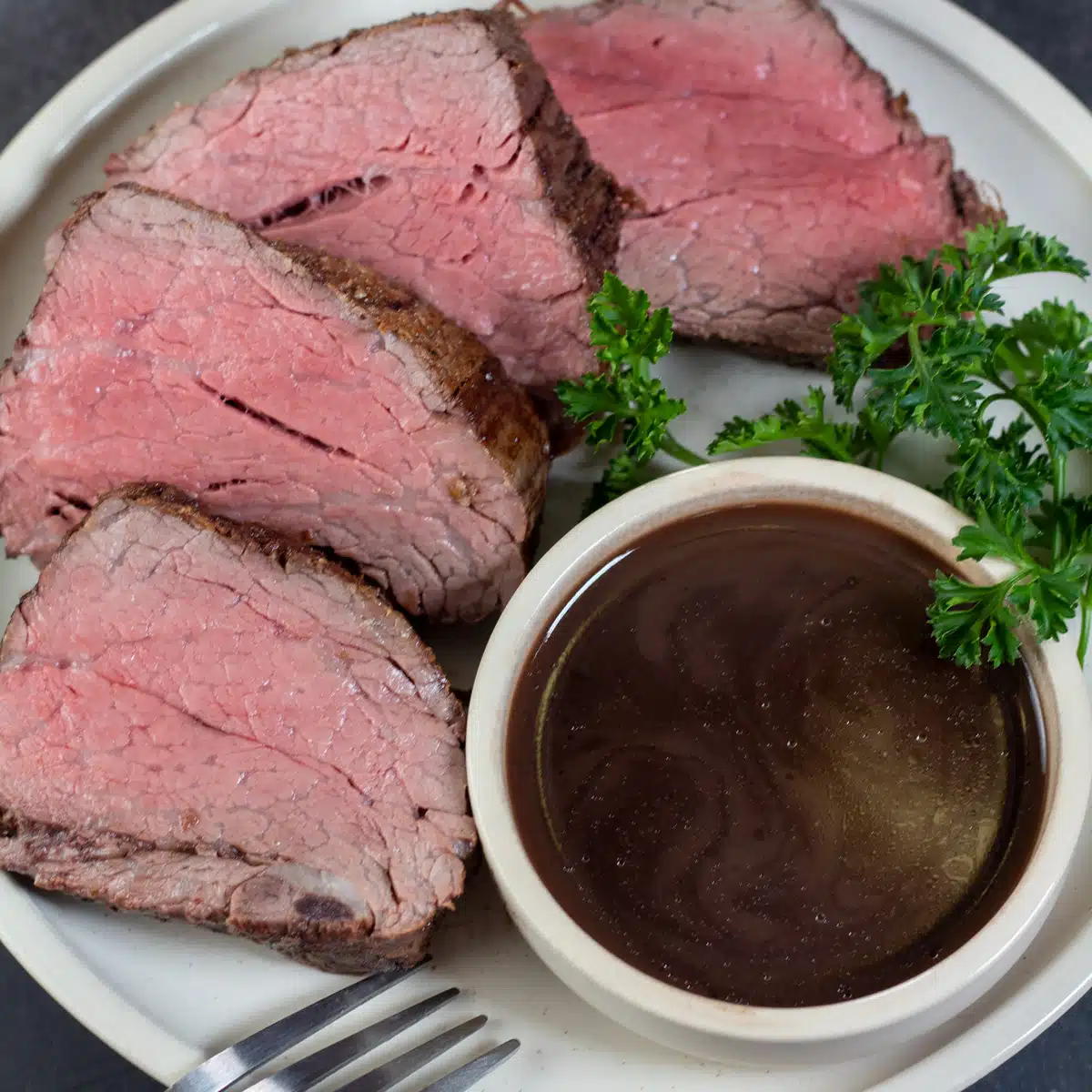
Jump to:
This red wine reduction sauce is a very easy condiment to prepare, but makes a world of difference when serving it with your favorite steak dinner. If you haven't tried a wine reduction sauce before, be prepared to have a new go-to sauce.
Red wine reduces to intensify the flavors of beef drippings, shallot, and garlic, then the balsamic vinegar adds a sweet and tangy flavor that pairs so wonderfully with steak. This is hands down my favorite sauce to serve alongside steak, pork, and braised ribs.
🥘 Ingredients
There are no complicated ingredients on this list. Just grab a quality red wine the next time you are at the grocery store.
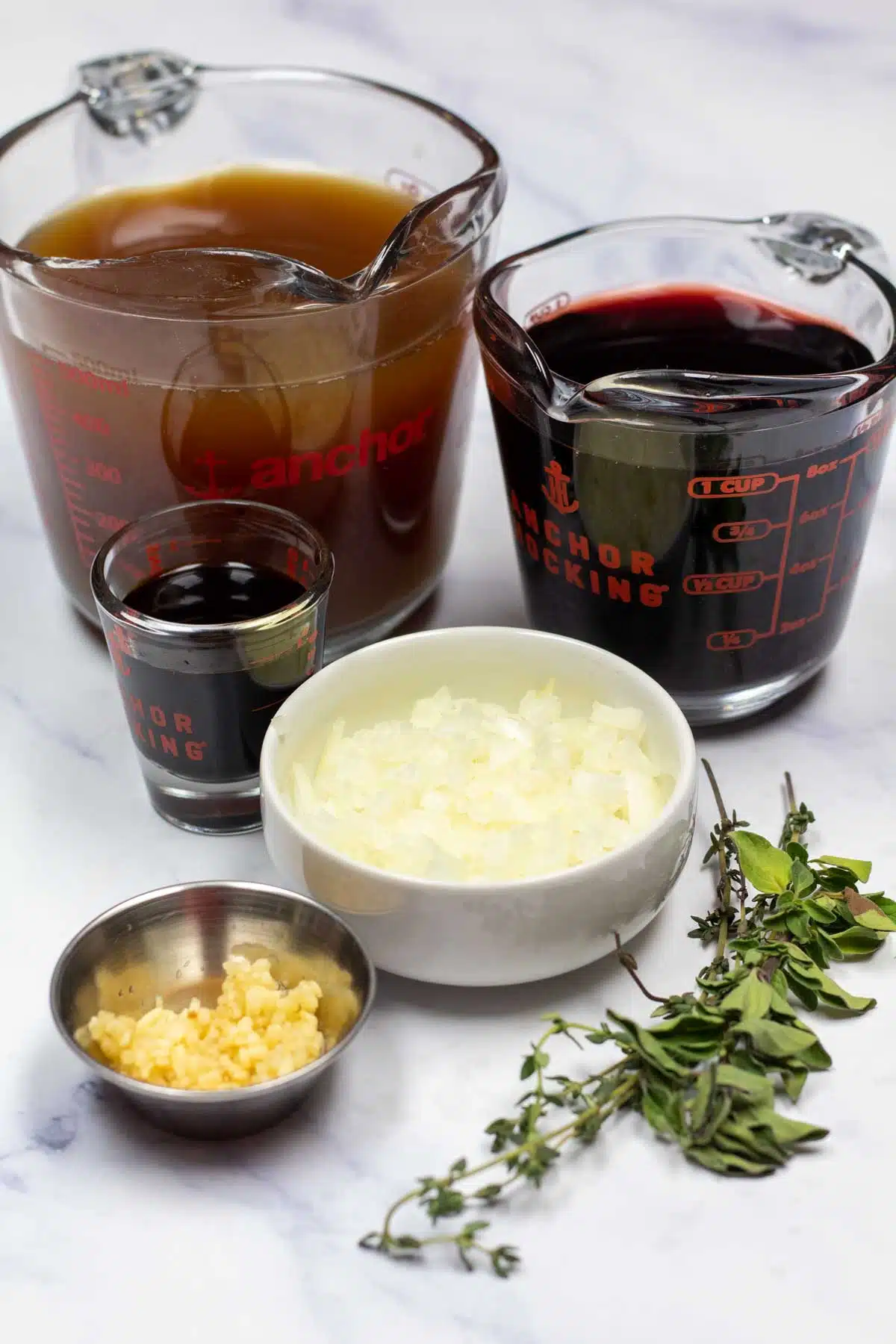
- Beef Drippings - 1 tablespoon of beef drippings. You may also use beef tallow or butter.
- Shallot - ¼ cup of finely diced shallot. A diced yellow onion or red onion would work too.
- Garlic - ½ tablespoon of garlic (minced).
- Beef Broth - 1 cup of beef broth.
- Red Wine - 1 cup of red wine. I recommend using better-quality red wine for the best flavor results in your sauce. Plus you can enjoy a glass of wine with dinner! Pinot noir, merlot, or a cabernet sauvignon are all great choices.
- Balsamic Vinegar - 2 tablespoons of balsamic vinegar.
- Fresh Thyme - 2-3 sprigs of fresh thyme.
- Fresh Oregano - 1-2 sprigs of fresh oregano (or rosemary).
- Butter (Optional) - 2 tablespoons of butter. You may add butter after the sauce is reduced for added richness to an already amazing flavor!
Be sure to see the free printable recipe card below for ingredients, exact amounts & instructions with tips!
🔪 How To Make Red Wine Reduction Sauce
If you've ever made a sauce for a recipe before, this red wine reduction is as easy as it gets. You will need a wooden spoon, whisk, measuring cups, saucepan (or skillet), and a fine mesh sieve to get started.
This red wine sauce recipe will yield around 6 servings. There is plenty for your steak main course and you might even have some leftovers.
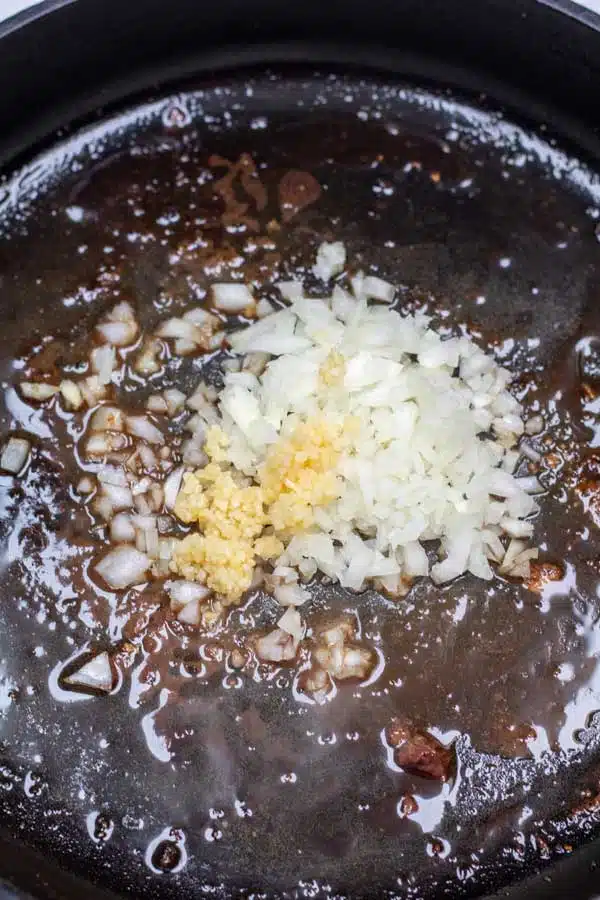
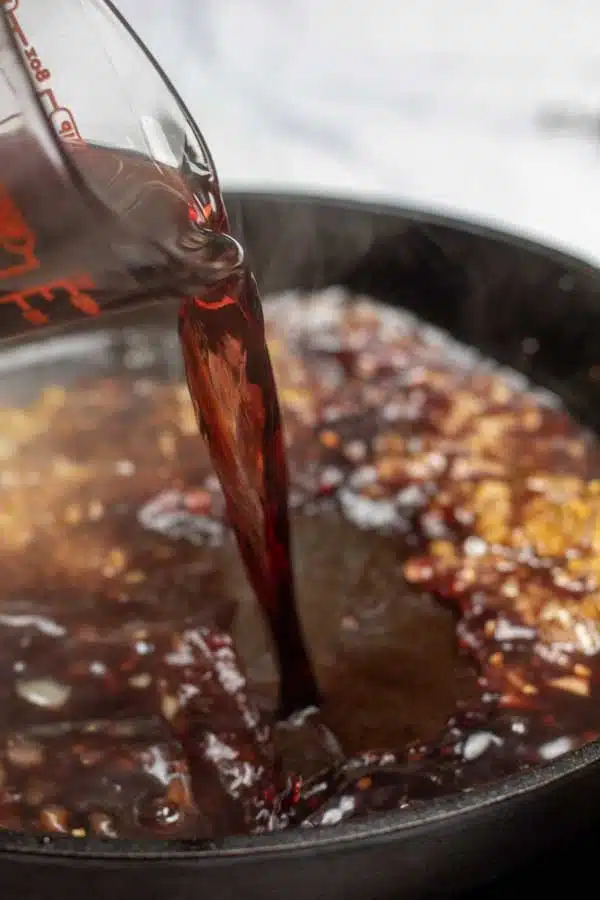
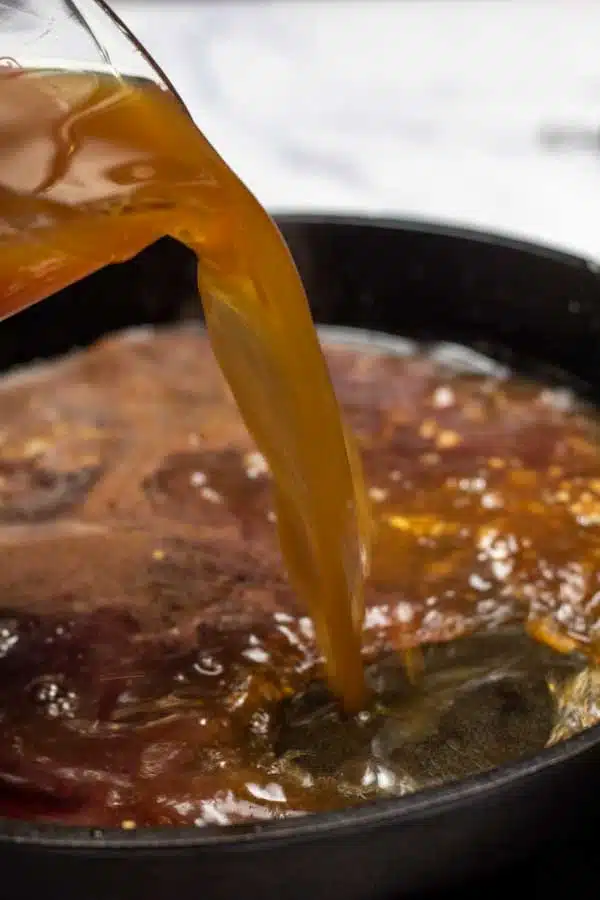
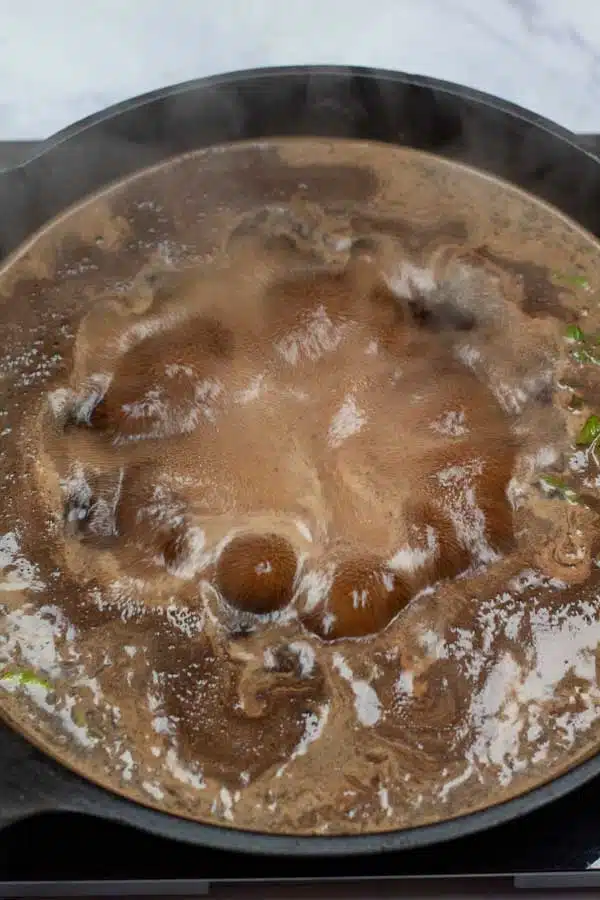
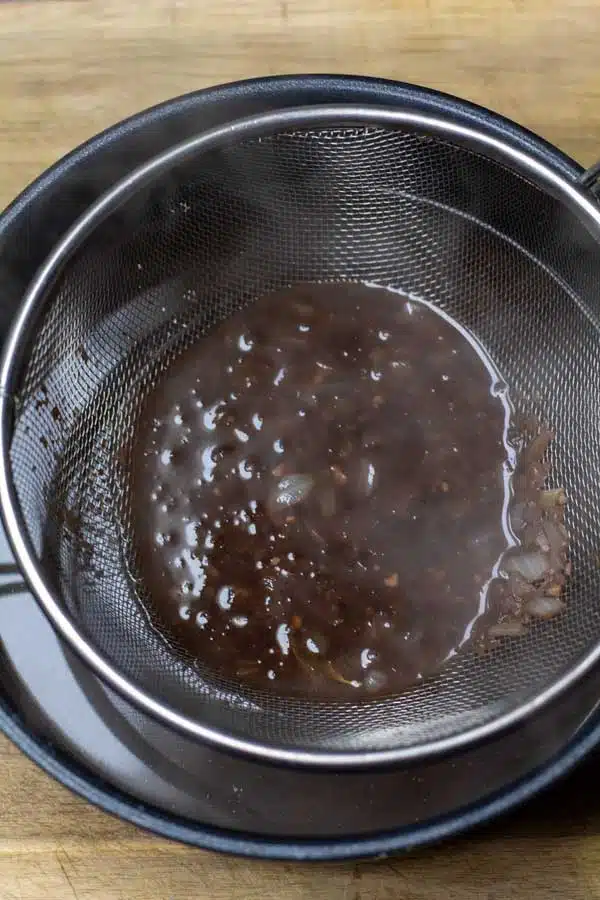
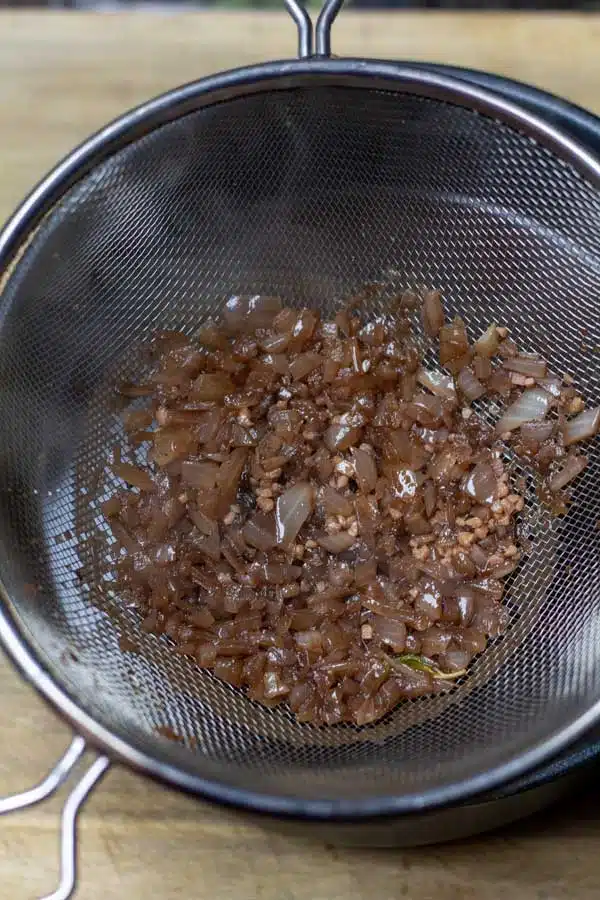
- Heat. In a skillet or saucepan, heat 1 tablespoon of beef drippings (or tallow, or butter) or medium. Add the ¼ cup of diced shallots (or onions) and ½ tablespoon of minced garlic and saute briefly for about 1 minute.
- Add ingredients. Pour in the 1 cup of red wine (use a wooden spoon or spatula to deglaze the pan if needed, scraping any browned bits on the bottom of the pan from cooking the steak). Then add the 1 cup of beef broth and 2 tablespoons of balsamic vinegar as well as the fresh herbs (thyme, oregano, or rosemary).
- Simmer sauce. Stir, increase to medium-high heat if needed, and bring your sauce to a simmer. Allow the sauce to reduce at a low, steady simmer until reduced by half and thickened. This should take anywhere between 15-30 minutes.
- Add butter (optional) - Once the sauce has reduced by half and is slightly thickened, add the 2 tablespoons of optional butter, remove the skillet or pan from heat, and whisk the butter into your sauce.
- Serve. I like to strain the sauce before serving, however, you can serve the red wine reduction sauce immediately after removing the herbs from the pan.
This sauce is the perfect pairing for grilled steak, pan-seared steak, or broiled steak dinners. It will also taste wonderful with pan-seared pork chops or baked short ribs. Enjoy!
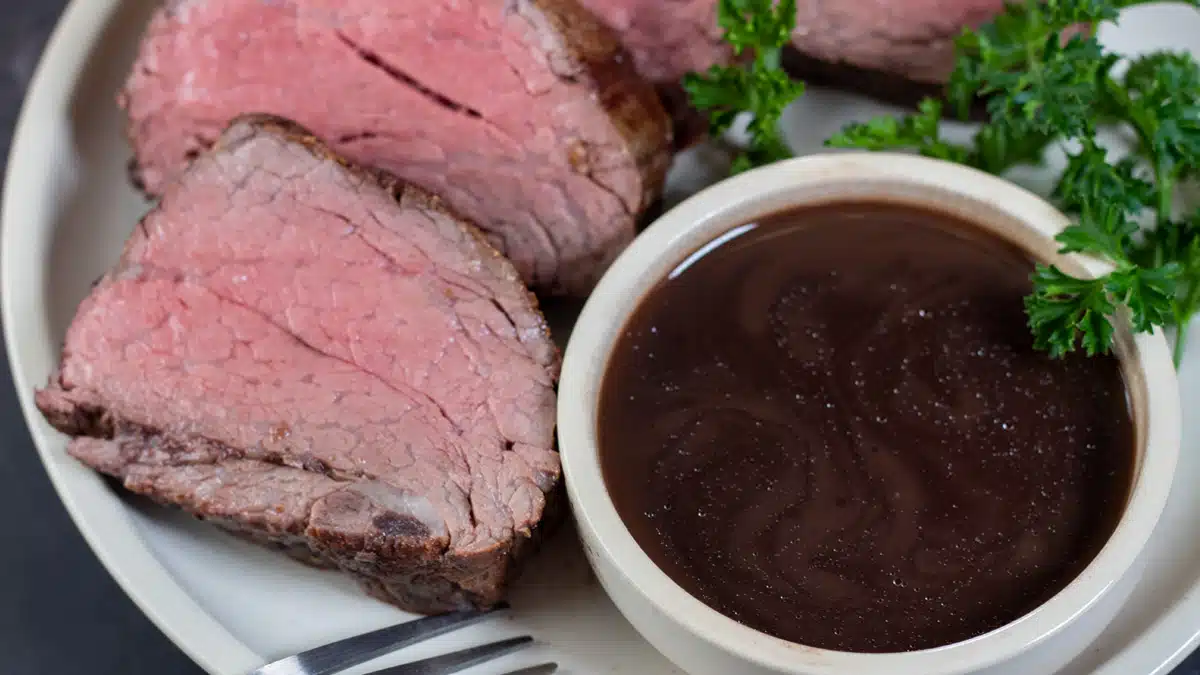
💭 Angela's Tips & Recipe Notes
- Your red wine reduction sauce should yield 1 ½ cups when reduced, with each serving being ¼ cup for nutrition calculation.
- Serve with your favorite cut of steak or pork, or use it to make delicious braised short ribs.
- Using a better quality red wine is recommended to yield the best flavor in your sauce (as well as to serve with dinner).
- Adding the optional butter after the sauce has reduced adds richness to the already amazingly flavorful sauce.
- Optionally, you can whisk 1 tablespoon of flour with your pan drippings or butter at the beginning of making this sauce to add a creamy texture.
- This sauce will be wonderfully tasty if you make it as instructed above with a 1:1 ratio of broth and wine but is equally wonderful with a slightly more mellow wine flavor with a 2:1 ratio of broth to wine. Starting with 2 cups of broth will require a few more minutes of cook time to reduce the sauce.
- Be patient when simmering and keep the heat just high enough to hold the sauce at a low, steady simmer. Rapidly simmered or boiled sauce can turn out tasting bitter or reduced too much.
>>>See All Of My Tasty Recipes Here!<<<
🥡 Storing
Transfer the cooled red wine reduction sauce into an airtight storage container. Store in the fridge for up to 3-4 days.
Store the cooled sauce in an airtight freezer storage bag or shallow container for up to 4-6 months. I feel that this sauce is best used within the first 3 months after cooking.
❓ Recipe FAQs
Absolutely! This red wine sauce will stay fresh in the fridge for up to 3-4 days. Make sure to keep it stored in an airtight container in the refrigerator before you are ready to serve.
No! By keeping it uncovered, you are allowing the water in the sauce to evaporate. This will help your sauce to thicken naturally without having to add any thickening agents.
It's really a personal preference if you want your red wine reduction to be thick or not. As you are simmering it, the sauce will already be reduced to half of its initial size. This will result in a thicker texture already. If you'd like, you could whisk in 1 tablespoon of flour to the beef drippings or butter at the beginning of making the sauce for a creamy texture.
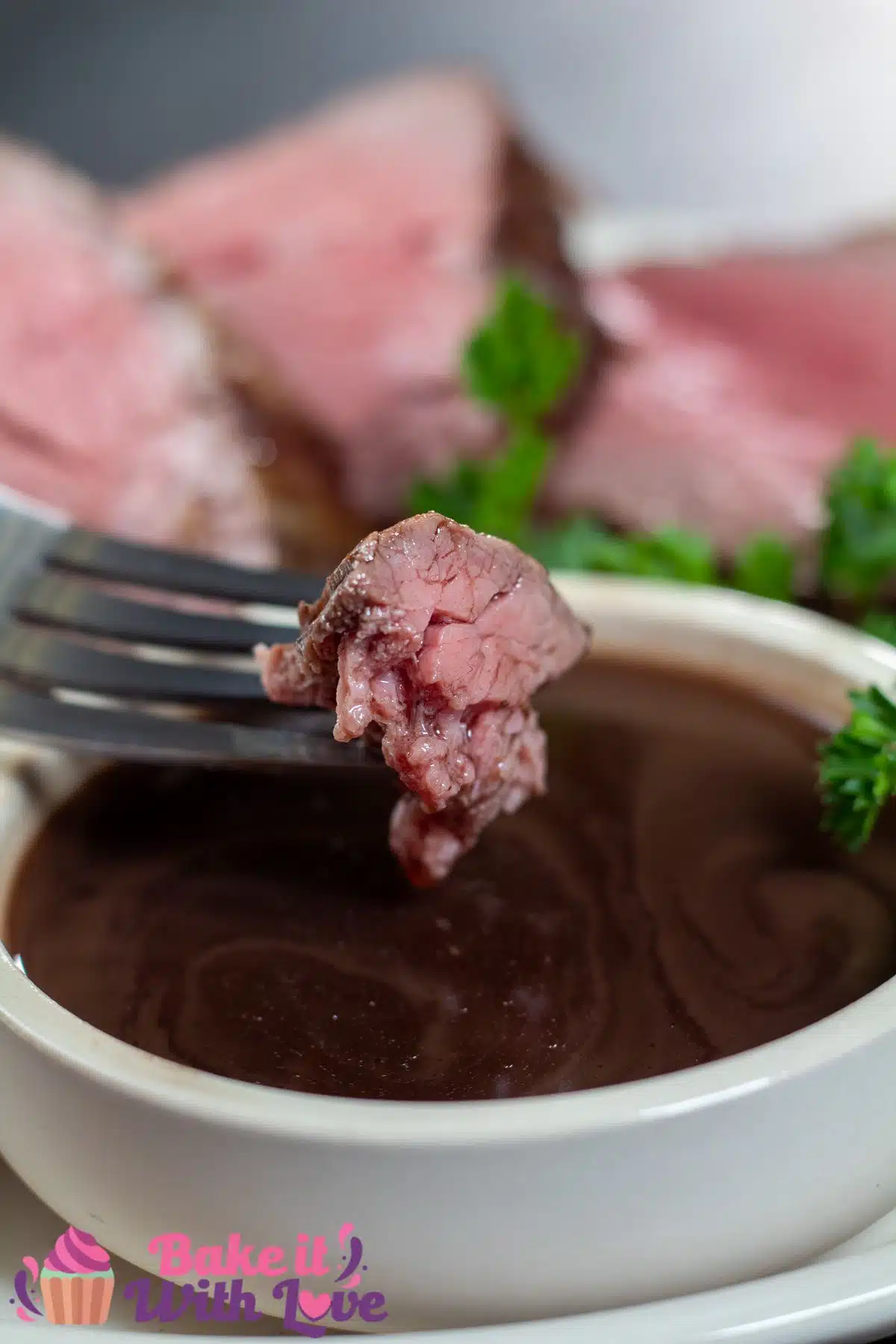
😋 More Tasty Sauce Recipes
- Horseradish Sauce For Prime Rib - If you are a fan of prime rib, beef tenderloin, or steak dinners, you have to try this delicious condiment.
- Mint Sauce For Lamb - This 3-ingredient sauce only takes a few minutes to prep, but makes a world of a difference to roasted meat meals.
- Lemon Butter Sauce For Fish - The next time that fish is on the menu, you have to try this incredibly easy lemon butter sauce recipe.
- Tzatziki Sauce - Who doesn't love a creamy, fresh, and savory dipping sauce that pairs well with anything?
- Arrabbiata Sauce - Take your spaghetti dishes to the next level with this delicious spicy Italian tomato sauce.
- Bloves Sauce - This rich and flavorful seafood sauce only takes 15 minutes to make.
Do you love a recipe you tried? Please leave a 5-star 🌟rating in the recipe card below and/or a review in the comments section further down the page.
Stay in touch with me through social media @ Pinterest, Facebook, Instagram, or Twitter! Subscribe to the newsletter today (no spam, I promise)! Don't forget to tag me when you try one of my recipes!
📖 Recipe Card
Red Wine Reduction Sauce For Steak
Ingredients
- 1 tablespoon beef drippings (or use beef tallow, or butter)
- ¼ cup shallot (finely diced, or use yellow onion or red onion)
- ½ tablespoon garlic (minced)
- 1 cup beef broth
- 1 cup red wine
- 2 tablespoon balsamic vinegar
- 2-3 sprigs fresh thyme
- 1-2 sprigs fresh oregano (or rosemary)
- 2 tablespoon butter (optional, see notes)
(Note: 2x or 3x only changes the ingredient list)
Instructions
- In a skillet or sauce pan, heat 1 tablespoon beef drippings (or tallow, or butter) or medium. Add the diced ¼ cup shallot and minced ½ tablespoon garlic and saute briefly, about 1 minute.
- Pour in the 1 cup red wine (use a wooden spoon or spatula to deglaze the pan if needed, scraping any browned bits on the bottom of the pan from cooking the steak). Then add the 1 cup beef broth and 2 tablespoon balsamic vinegar as well as the fresh herbs (2-3 sprigs fresh thyme, 1-2 sprigs fresh oregano, or rosemary).
- Stir, increase to medium-high heat if needed, and bring your sauce to a simmer. Allow the sauce to reduce at a low, steady simmer until reduced by half and thickened. This should take anywhere between 15-30 minutes.
- Once the sauce has reduced by half and is slightly thickened, add the optional butter, remove the skillet or pan from heat, and whisk the 2 tablespoon butter into your sauce.
- I like to strain the sauce before serving, however, you can serve the red wine reduction sauce immediately after removing the herbs from the pan.
Notes
- Your red wine reduction sauce should yield 1 ½ cups when reduced, with each serving being ¼ cup for nutrition calculation.
- Serve with your favorite cut of steak or pork, or use to make delicious braised short ribs.
- Using a better quality red wine is recommended to yield the best flavor in your sauce (as well as to serve with dinner).
- Adding the optional butter after the sauce has reduced adds richness to the already amazingly flavorful sauce.
- Optionally, you can whisk 1 tablespoon of flour with your pan drippings or butter at the beginning of making this sauce to add a creamy texture.
- This sauce will be wonderfully tasty if you make it as instructed above with a 1:1 ratio of broth and wine, but is equally wonderful with a slightly more mellow wine flavor with a 2:1 ratio of broth to wine. Starting with 2 cups broth will require a few more minutes of cook time to reduce the sauce.
- Be patient when simmering and keep the heat just high enough to hold the sauce at a low, steady simmer. Rapidly simmered or boiled sauce can turn out tasting bitter or reduced too much.
- To store: Transfer the cooled red wine reduction sauce into an airtight storage container. Store in the fridge for up to 3-4 days.
- To freeze: Store the cooled sauce in an airtight freezer storage bag or shallow container for up to 4-6 months. I feel that this sauce is best used within the first 3 months after cooking.

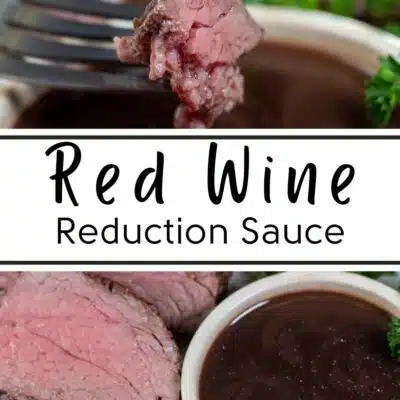
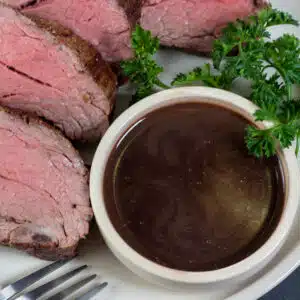
Anonymous says
Can you make this the day before serving?
Angela Latimer says
Yes, definitely. It's best to warm it slightly before serving for the consistency to be right.
Esther Soler Pujol says
La receta esta genial, excepto por el ingrediente de excrementos de res, que espero sea un error de escritura, ya que es un ingrediente muy poco apetecible
Por todo lo demás maravilloso
"The recipe is great, except for the beef dung ingredient, which I hope is a typing error, since it is a very unappetizing ingredient.
For everything else wonderful"
Angela @ BakeItWithLove.com says
Los 'goteos' son lo que supongo que estás haciendo referencia, traduciendo mal. Es la grasa y los jugos de cocinar asados, no el estiércol.
"The 'drippings' are what I am assuming you're referencing, translating poorly. It is the grease and juices from cooking roasts, not dung."